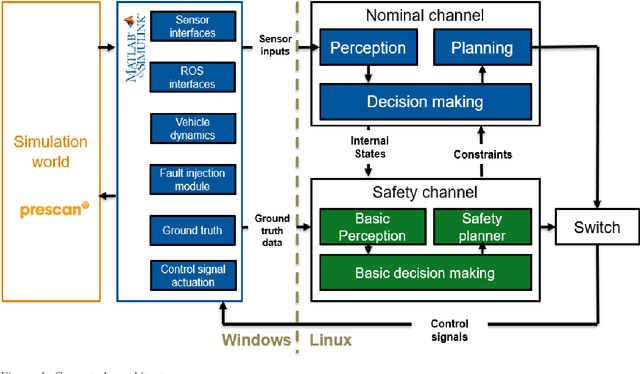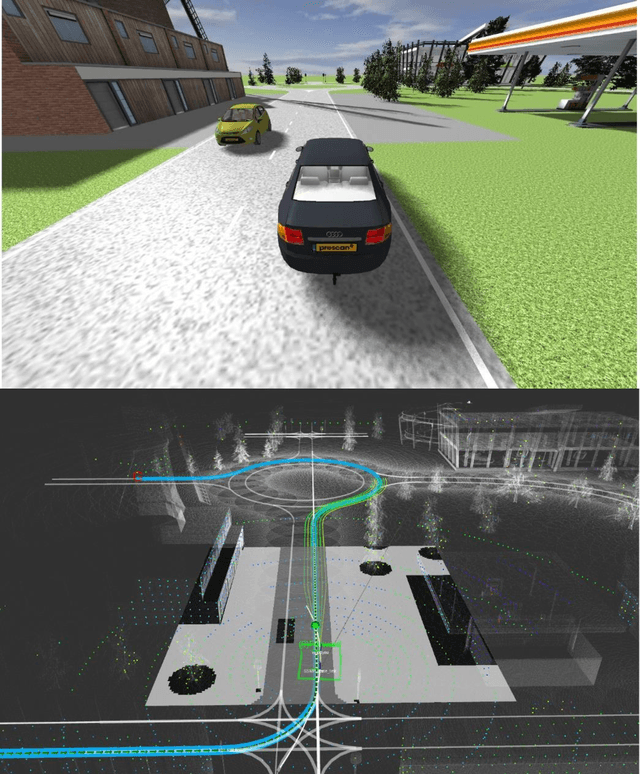AD-EYE: A Co-simulation Platform for Early Verification of Functional Safety Concepts
Paper and Code
Dec 01, 2019

Automated Driving is revolutionizing many of the traditional ways of operation in the automotive industry. The impact on safety engineering of automotive functions is arguably one of the most important changes. There has been a need to re-think the impact of the partial or complete absence of the human driver (in terms of a supervisory entity) in not only newly developed functions but also in the qualification of the use of legacy functions in new contexts. The scope of the variety of scenarios that a vehicle may encounter even within a constrained Operational Design Domain, and the highly dynamic nature of Automated Driving, mean that new methods such as simulation can greatly aid the process of safety engineering. This paper discusses the need for early verification of the Functional Safety Concepts (FSCs), details the information typically available at this stage in the product lifecycle, and proposes a co-simulation platform named AD-EYE designed for exploiting the possibilities in an industrial context by evaluating design decisions and refining Functional Safety Requirements based on a reusable scenario database. Leveraging our prior experiences in developing FSCs for Automated Driving functions, and the preliminary implementation of co-simulation platform, we demonstrate the advantages and identify the limitations of using simulations for refinement and early FSC verification using examples of types of requirements that could benefit from our methodology.
 Add to Chrome
Add to Chrome Add to Firefox
Add to Firefox Add to Edge
Add to Edge